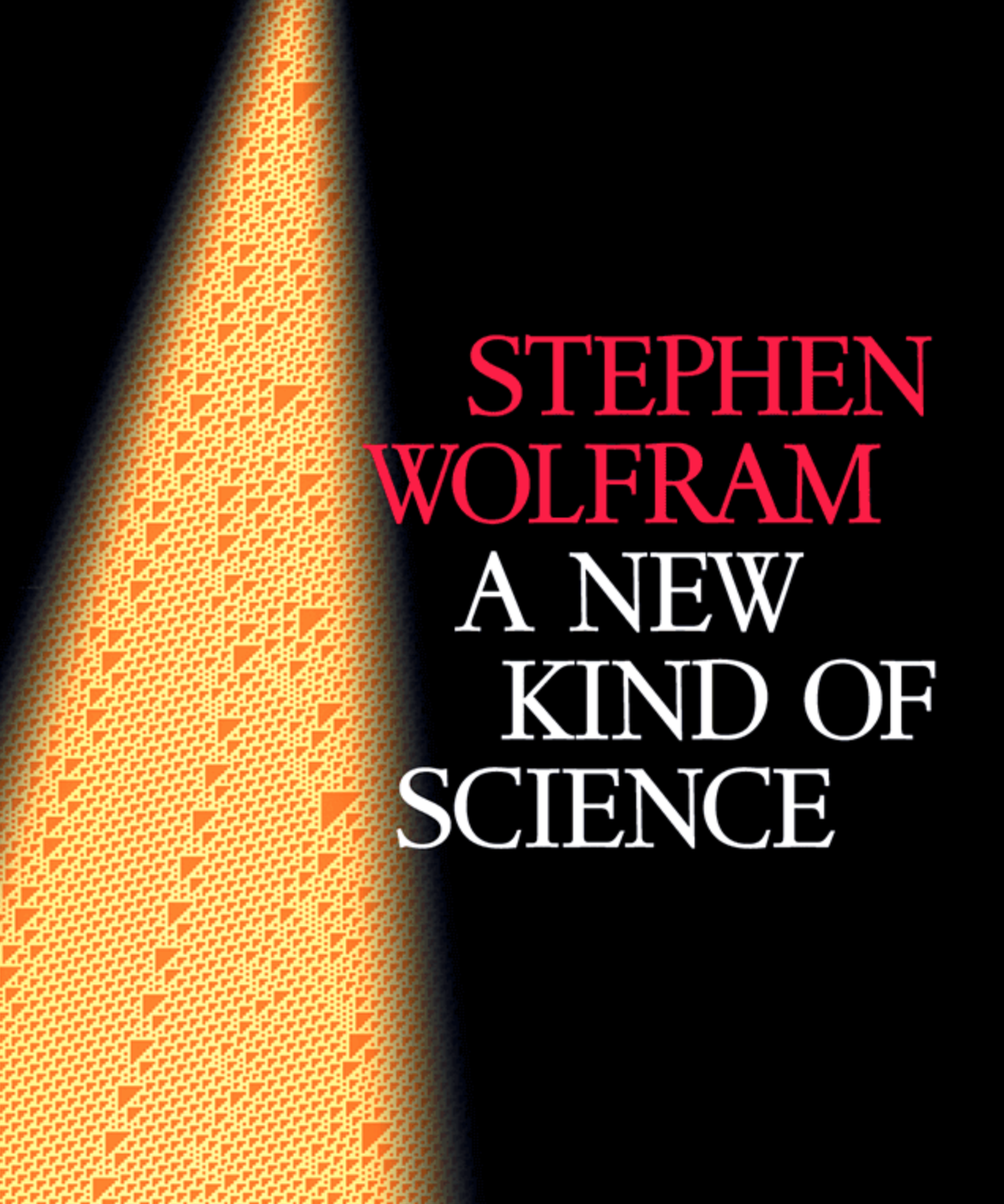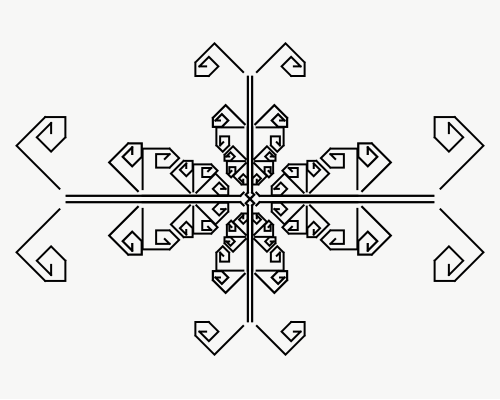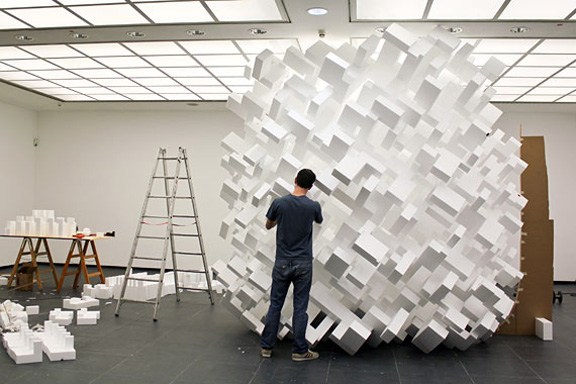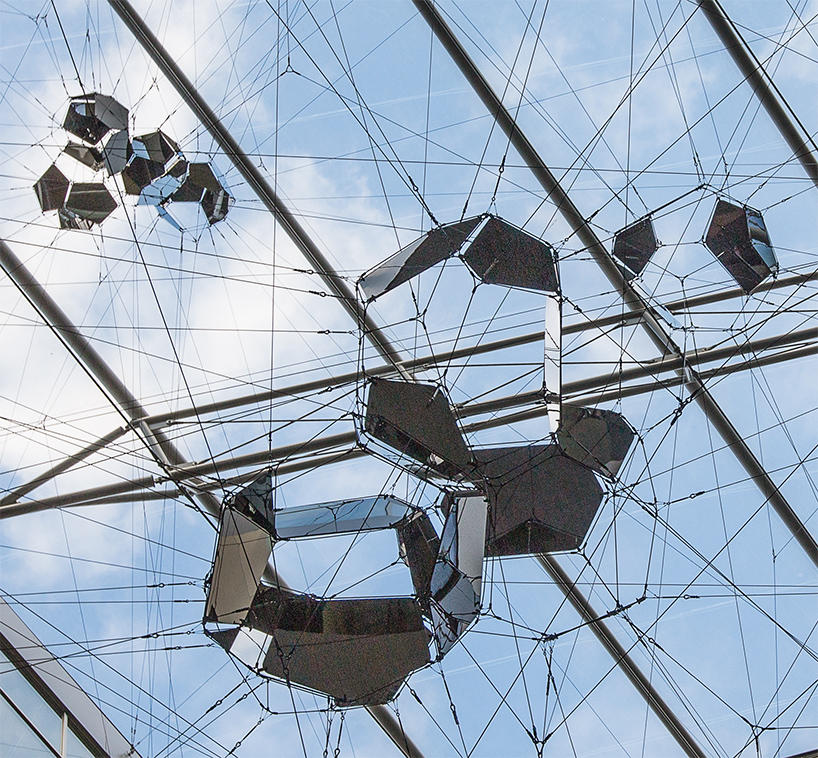
https://www.wolframscience.com/nks/
Studio 9: Architectural Notations
KTH Royal Institute of Technology Architecture School

https://www.wolframscience.com/nks/
An investigation into how triply-periodic minimal surfaces are defined, derived, and classified. Includes description of examples known in 1972. Plateau’s problem. Fundamental concepts of the differential geometry of minimal surfaces, including the Schwarz reflection principle; Euler characteristic; mean curvature; Gaussian curvature; Gauss map of a surface by parallel normals onto the Riemann sphere; associate and adjoint surfaces; skeletal graphs; complementary minimal surfaces; the classical Schwarz surfaces and the gyroid.
Part 1: https://www.youtube.com/watch?v=JulrXPr19hs
Part 2: https://www.youtube.com/watch?v=-9bB00XShWQ
Part 3: https://www.youtube.com/watch?v=bokgQhFoMjY
Part 4: https://www.youtube.com/watch?v=3APTe-VubOI

For anyone interested in L-systems, here are a couple of nice examples by Fatih Erikli and Diana Lange:
https://fatiherikli.github.io/kilim-motifs/
https://www.openprocessing.org/sketch/205214
An interesting book on the subject, “The Algorithmic Beauty of Plants” by Przemyslaw Prusinkiewicz and Aristid Lindenmayer, is also available online:

John Powers, God’s Comic
Power’s forms are constructed out of a limited formal vocabulary: Polystyrene blocks cut to a selection of preset sizes, attached to each other at 90 degree angles. The resulting structure gives the appearance of being a computer-aided design but is in reality the outcome of a human-executed algorithm, dictated by the artist’s intuition expressed through the repetitive action of connecting blocks.

http://www.creativejournal.com/posts/235-john-powers-god-s-comic
An interesting practice working with programming and architecture, both parametrically but also using pattern recognition and other techniques, and problematising their relation to architecture: www.certainmeasures.com
Hey guys,
This project got me fascinated a few years ago (firstly because of the sci-fi-esc columns). Manufacturing is by means of 3D-printing with concrete, using robots. In my opinion, it is interesting on the topic of ornamentics due to the structural characteristics which could also be said to be decorative.
https://www.amalgamma.org/
http://www.archdaily.com/780778/bartlett-students-develop-new-method-for-3d-printing-concrete
Wasp is a set of Grasshopper components, developed in Python, directed at representing and designing with discrete elements. The description of each individual part includes basic information necessary for the aggregation process (part geometry, connections location and orientation). The set of connections define the topological graph of the part, which is then used to define the possibilities of aggregation with other parts.
The core of the framework relies on a set of aggregation procedures, allowing generation of specific structures from the combination of different modules. Each of these procedures is composed of strategies for the selection of basic aggregation rules, described as an instruction to orient one module over a selected connection of another module. Currently available procedures include stochastic aggregation and field-driven aggregation.
Download: http://www.food4rhino.com/app/wasp
Significant parts of Wasp have been developed by Andrea Rossi as part of research on digital materials and discrete design at DDU Digital Design Unit – Prof. Oliver Tessmann – Technische Universität Darmstadt (http://www.dg.architektur.tu-darmstadt.de/dg/startseite_3/index.de.jsp)

Design Boom, Tomas Saraceno Sundail, Oslo
read full article here: https://www.designboom.com/art/tomas-saraceno-sundial-for-spatial-echoes-aker-brygge-oslo-07-22-2015/
“visitors experience constantly-changing reflections from the building that evolve both ‘sundial for spatial echoes’ and the interior space in varied shades and colorings. The work recalls forms found in chemistry, biology, physics, and cosmos, building upon the symbiotic relationship between spaces, places, objects and ideas. these aesthetic and experiential sources encapsulate the feeling of the interdependencies of the system as a whole — making small changes in one string, for example, reverberates through the entire composition of the piece.”